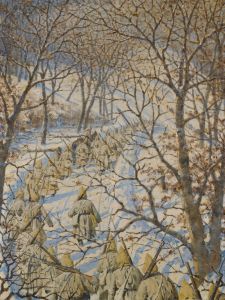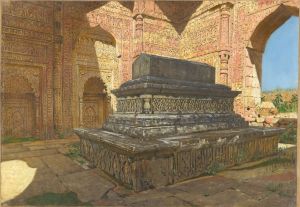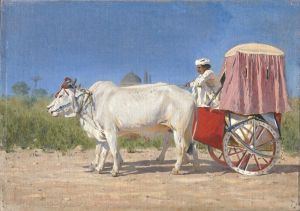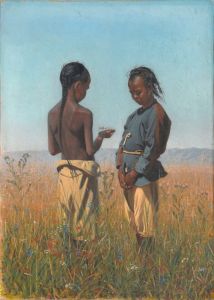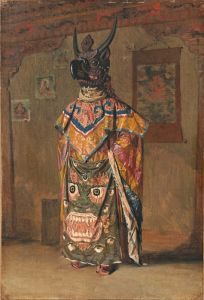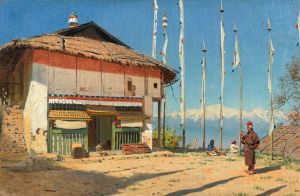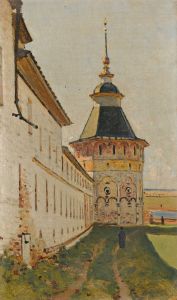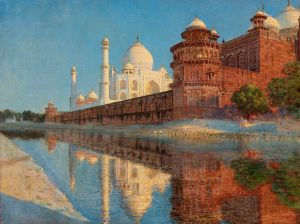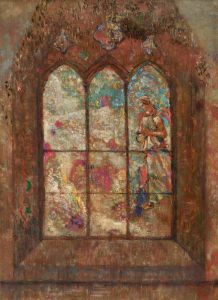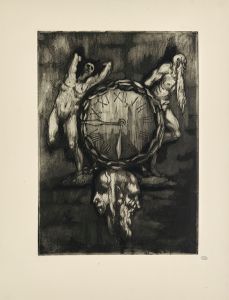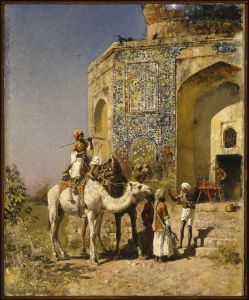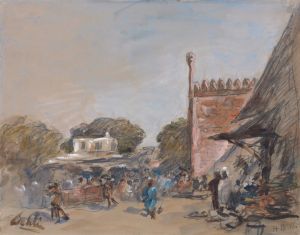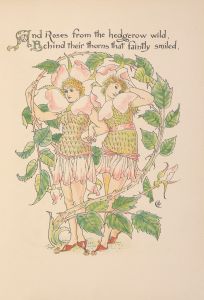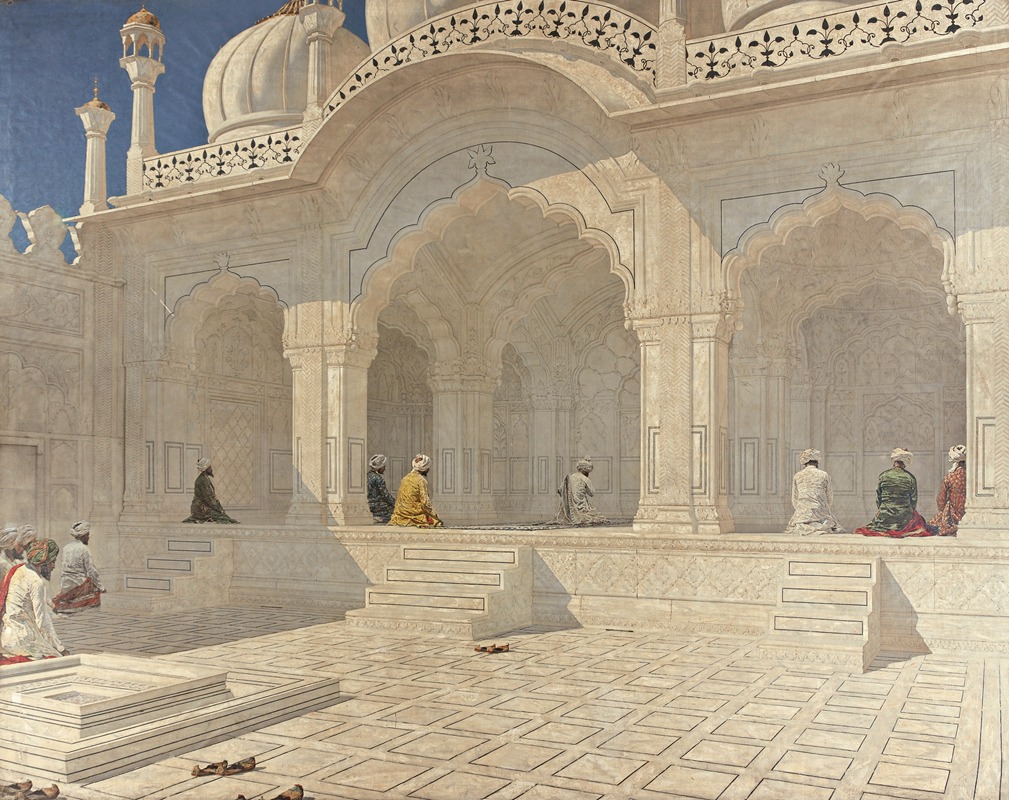
Pearl Mosque At Delhi
A hand-painted replica of Vasily Vereshchagin’s masterpiece Pearl Mosque At Delhi, meticulously crafted by professional artists to capture the true essence of the original. Each piece is created with museum-quality canvas and rare mineral pigments, carefully painted by experienced artists with delicate brushstrokes and rich, layered colors to perfectly recreate the texture of the original artwork. Unlike machine-printed reproductions, this hand-painted version brings the painting to life, infused with the artist’s emotions and skill in every stroke. Whether for personal collection or home decoration, it instantly elevates the artistic atmosphere of any space.
Vasily Vereshchagin was a renowned Russian war artist and traveler known for his realistic portrayals of the places he visited and the events he witnessed. Among his many works, "Pearl Mosque At Delhi" stands out as a significant piece that captures the architectural beauty and cultural essence of the Indian subcontinent during the late 19th century.
The painting "Pearl Mosque At Delhi" depicts the interior of the mosque located within the Red Fort complex in Delhi, India. The Pearl Mosque, also known as the Moti Masjid, was built by the Mughal Emperor Aurangzeb between 1659 and 1660. It is a small, yet exquisite structure made primarily of white marble, which gives it a serene and ethereal appearance, much like a pearl, hence its name.
Vereshchagin's painting captures the mosque's intricate architectural details, highlighting the Mughal style that combines Islamic, Persian, and Indian influences. The mosque is characterized by its three domes and a prayer hall that is adorned with delicate carvings and inlays. The use of white marble not only adds to the aesthetic appeal but also reflects the grandeur and opulence of the Mughal Empire during its zenith.
In his depiction, Vereshchagin focuses on the play of light and shadow within the mosque, emphasizing the tranquility and spiritual ambiance of the space. The artist's attention to detail is evident in the way he renders the mosque's arches, columns, and the subtle reflections on the marble surfaces. This meticulous representation allows viewers to appreciate the mosque's architectural beauty and the serene atmosphere it embodies.
Vereshchagin's choice to paint the Pearl Mosque reflects his broader interest in capturing the diverse cultures and landscapes he encountered during his travels. His works often serve as a visual documentation of the places he visited, providing insights into the architectural and cultural heritage of different regions. Through his art, Vereshchagin aimed to foster a greater understanding and appreciation of the world's diverse cultures.
The painting is part of Vereshchagin's larger body of work that includes scenes from India, Central Asia, and the Middle East. His travels to these regions were motivated by a desire to explore and document the rich histories and traditions that were often unfamiliar to his European audience. Vereshchagin's works were widely exhibited and contributed to a growing interest in Orientalism during the 19th century, although his approach was often more nuanced and respectful compared to some of his contemporaries.
"Pearl Mosque At Delhi" is a testament to Vereshchagin's skill as an artist and his ability to convey the essence of a place through his art. The painting not only showcases the architectural splendor of the Moti Masjid but also serves as a historical record of the cultural and artistic achievements of the Mughal period. Through his work, Vereshchagin invites viewers to appreciate the beauty and diversity of the world, encouraging a deeper understanding of the cultural connections that transcend geographical boundaries.





